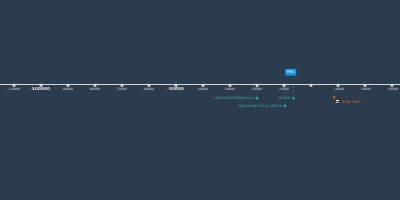Neolithisation Europe (1 janv. 5500 av. J.-C. – 1 janv. 2300 av. J.-C.)
Description:
Key Facts- Characteristics of Neolithic societies are :
1) Agriculture
2) Domesticated animals
3) Pottery
4) Polished stone axes
*(These characteristics do not always hold true: some Mesolithic societies did have pottery (for example the Danish Ertebølle culture))
Chronology Three Phases:
The introduction of farming gradually takes places from south to north Europe;
Phase 1.
7000-5500 BC: Neolithisation of Greece/southeast Europe (the Balkan).
Phase 2.
5500-4900 BC: Bandkeramik culture farmers spread from Hungarian Plain to the far west (France/south Netherlands and far east (Moldavia/Ukraine) and are the first farmers in these regions (the ‘north’ wave of Neolithisation).
Phase 3
4100-2500 BC: (end date differs from region to region): Mesolithic societies in northern Europe become farmers as result of interaction with farming communities in the south.
What about the Mesolithic societies in this time?:
- Mesolithic hunter/gatherers traded goods with farmers, and through such exchange, Neolithic adzes and axes and later domesticated products reached them;
- through such exchanges, Mesolithic societies came to incorporate some agriculture and domesticated animals in their hunter/gatherer life style; an example is the Dutch Swifterbant culture who lived in the delta;
- Mesolithic societies had an extended broad spectrum subsistence economy (using many sources in the landscape such as fishing, gathering plants, hunting etc.); agriculture and domesticated animals became another element;
- in regions like the Dutch delta, it took millennia (from 4100-2500 BC) before these ‘Mesolithic farmers’ become real farmers.
Ajouté au bande de temps:
Date:
1 janv. 5500 av. J.-C.
1 janv. 2300 av. J.-C.
~ 3202 years
